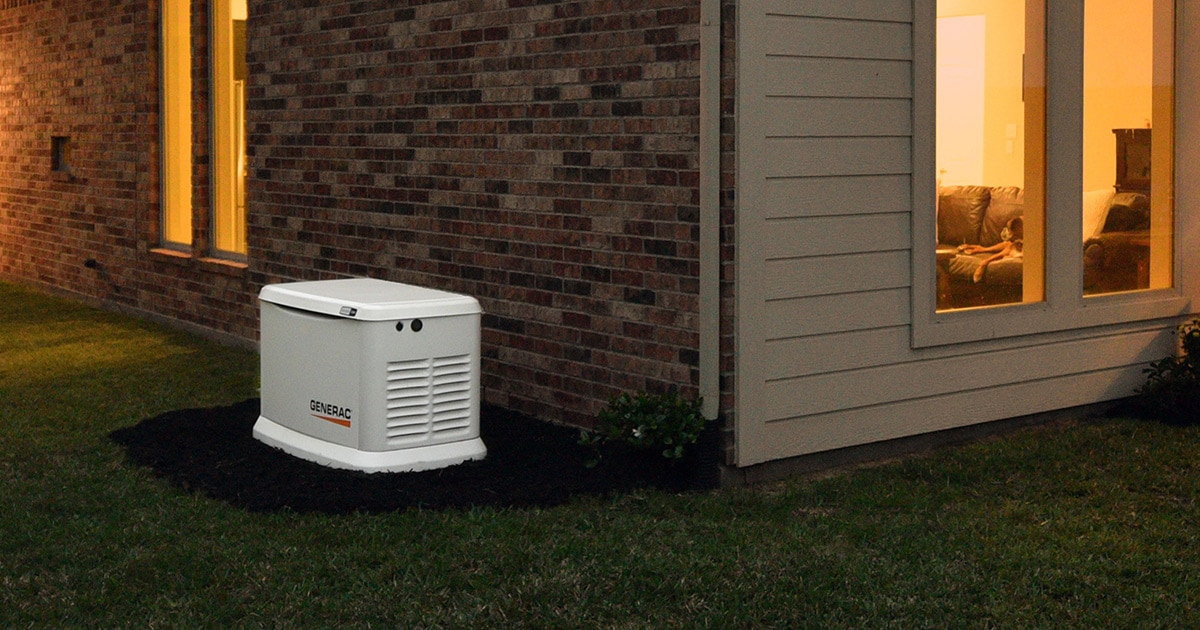
Standby Generator Buying Guide
How to Buy a Standby Generator

Imagine coming home after a long day, and suddenly you can't turn on the lights or zap a meal in the microwave. Or worse, you have to deal with unbearable indoor temperatures, spoiled food in the fridge, and a flooded basement because the sump pump didn't operate.
Standby home generators, also known as residential generators, can make power outages a struggle of the past. Like a knight keeping vigil over a castle, home generators “watch” out for a power outage even when you're not home. They automatically restore power without you lifting a finger.
Sure, you may be more familiar with portable home generators, and they certainly have their time and place. But for severe and long-term power outages or even shorter ones where you want immediate, reliable power and peace-of-mind, an automatic backup generator is the best solution. If you don’t know where to start, we have you covered. Here's how to buy a standby generator.

Which Standby Home Generator Should I Get?
Standby generators come in various fuel types and wattage ratings. Choosing your standby will depend on:
- What and how much you want to power in your home during an outage
- Which fuel type makes the most economical and practical sense for you
To size your standby generator, you need to figure out the wattage of everything you want to power. Air conditioners draw significant amounts of power, so you need to decide whether you want or need them during an outage. If you do, then you need to make sure your generator will power them, plus everything else.
As for fuel-type, standby emergency generators are commonly powered by natural gas, propane, or diesel. Diesel-powered models are usually the largest and most expensive because they have liquid-cooled engines. Make sure you get the type that matches the fuel available in your area. For example, don't get natural gas unless you have access to a gas line.
Below are three different scenarios that provide possible standby generator solutions. The home standby generator cost will increase along with power capacity.
Scenario 1: Basic Power
Since the power outages last a few hours or less, you only need to power some essentials—lights, a fridge, the sump pump, a microwave, etc. It doesn’t get scorching hot, so you can get by without the air conditioner running or run a small, portable unit instead.
Lower-wattage standby home generators (7kW-9kW) will likely work best in this scenario. Their automatic operation means you don't have to do any work during a power outage, and you will still be able to run essential appliances. After the installer connects the generator to essential circuits, you will be good to go.
Scenario 2: Intermediate Power
Air conditioners (and any appliance with an electric motor) draw significant power when they first turn on to get the motor running. This initial spike of electricity is called surge wattage. Once the motor begins to run, power requirements decrease and stabilize.
A smaller home generator, like the one in the previous scenario, would struggle to power everything, especially during surge periods. You should choose at least an 11kW generator, depending on how much you need to power. If you had two central air conditioners, for example, the power requirements would be higher, requiring a 17kW or a 22kW.
Many standby generators come with built-in A/C load shedding, that will turn off non-essential circuits when the air conditioner needs extra power at startup. Load shedding lets you buy a less expensive, less powerful generator that will manage your electrical needs.
Scenario 3: Ultimate Power
Not wanting any interruptions in power and willing to pay a premium, you choose a 45kW+ whole house standby generator to make it as if a blackout never happened. This generator will most likely be liquid-cooled.
Once your installer connects it to the entire electrical panel, the home generator will power everything in the house. It may not even need to load shed since it produces so much wattage. You're 100% set for any blackout.
Power in Your Hands
Power outages may be a fact of life, but they don't have to ruin your plans or your home. When you have a backup standby generator, you put the power back into your hands so worrying is a thing of the past.
eComfort is the easy way to provide comfort, security, and peace of mind. If you need any help choosing the right standby generator for your home, please give us a call at (866) 554-4328 to speak with a product expert.
